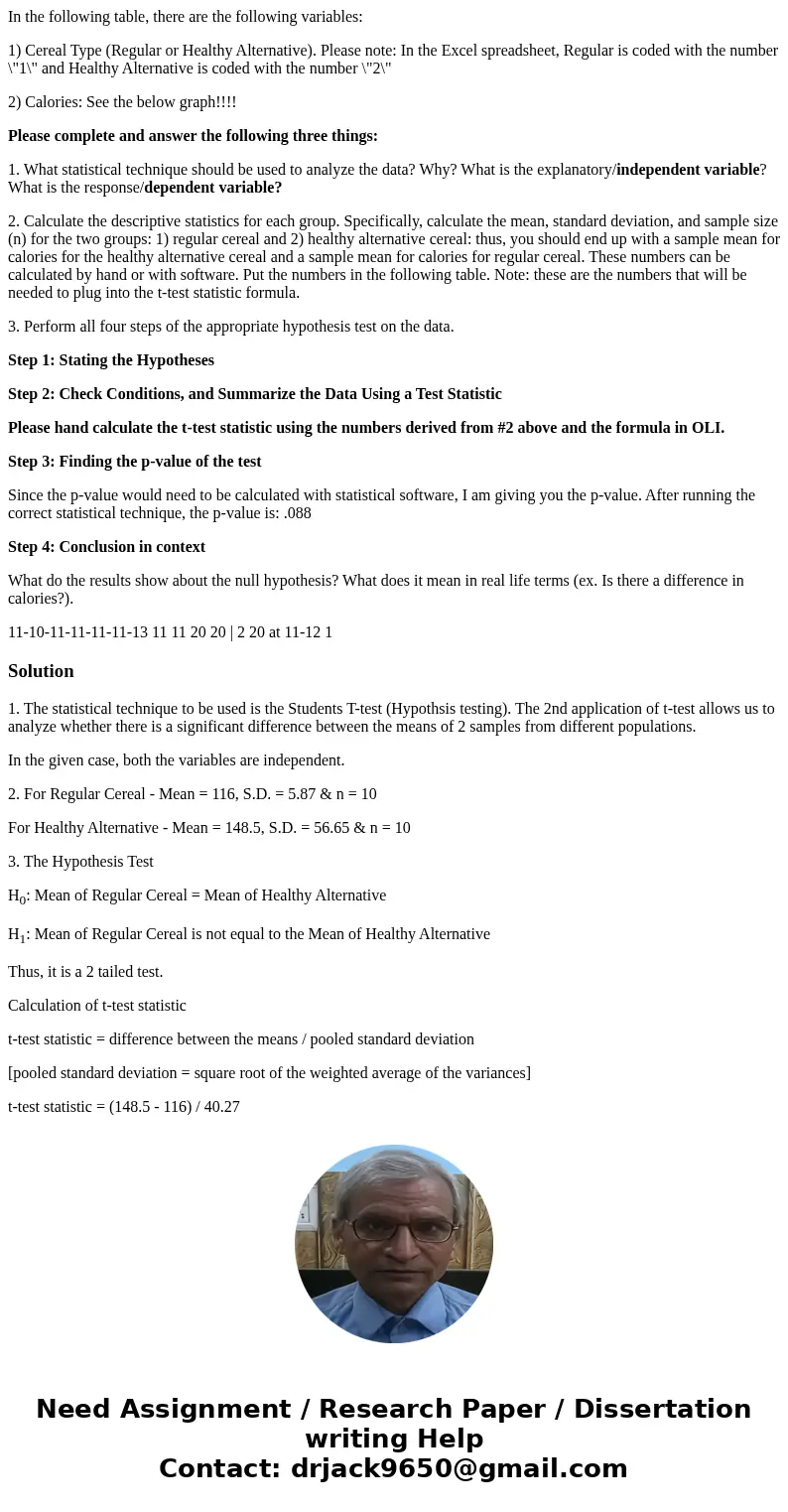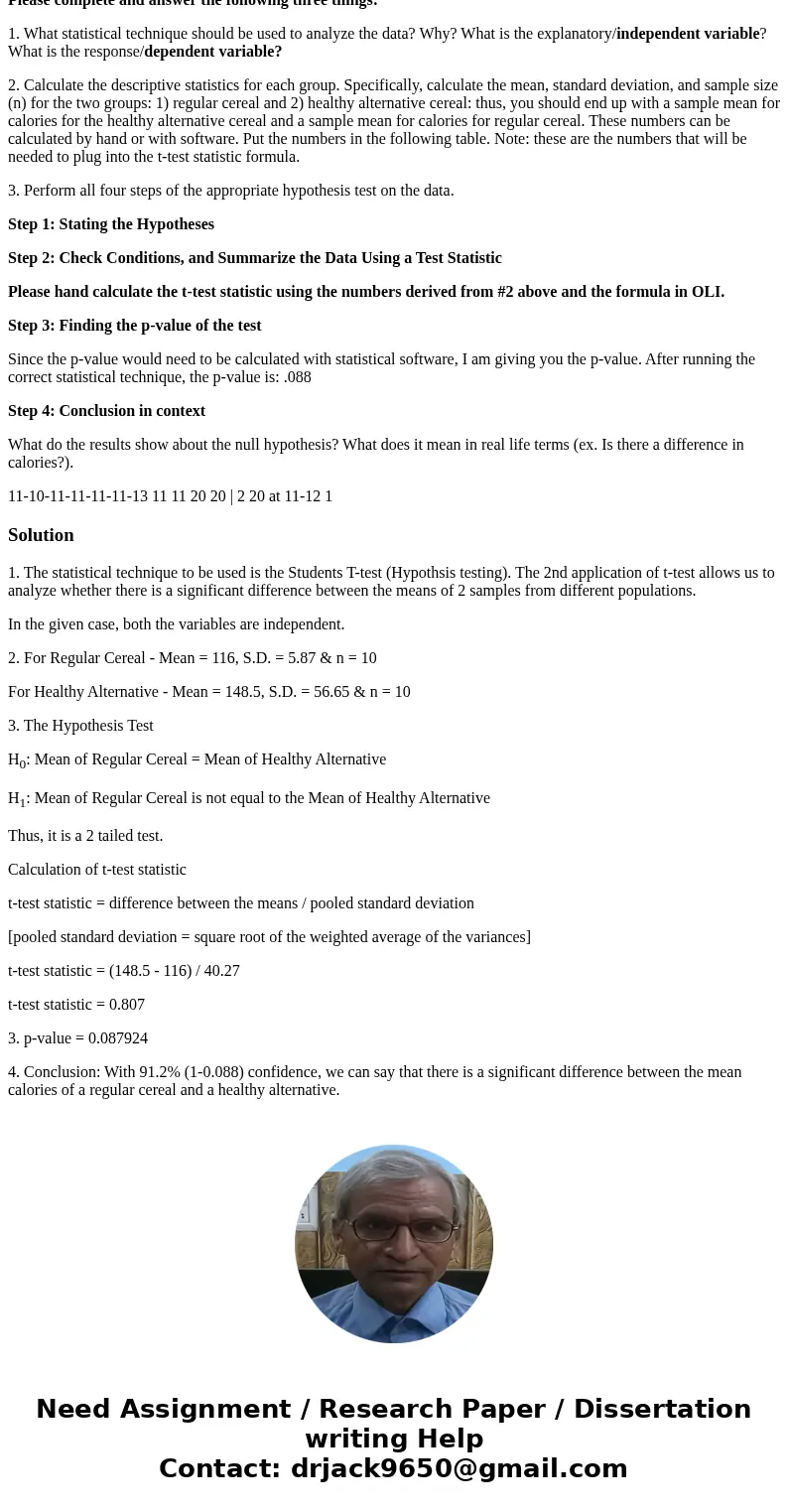In the following table there are the following variables 1 C
In the following table, there are the following variables:
1) Cereal Type (Regular or Healthy Alternative). Please note: In the Excel spreadsheet, Regular is coded with the number \"1\" and Healthy Alternative is coded with the number \"2\"
2) Calories: See the below graph!!!!
Please complete and answer the following three things:
1. What statistical technique should be used to analyze the data? Why? What is the explanatory/independent variable? What is the response/dependent variable?
2. Calculate the descriptive statistics for each group. Specifically, calculate the mean, standard deviation, and sample size (n) for the two groups: 1) regular cereal and 2) healthy alternative cereal: thus, you should end up with a sample mean for calories for the healthy alternative cereal and a sample mean for calories for regular cereal. These numbers can be calculated by hand or with software. Put the numbers in the following table. Note: these are the numbers that will be needed to plug into the t-test statistic formula.
3. Perform all four steps of the appropriate hypothesis test on the data.
Step 1: Stating the Hypotheses
Step 2: Check Conditions, and Summarize the Data Using a Test Statistic
Please hand calculate the t-test statistic using the numbers derived from #2 above and the formula in OLI.
Step 3: Finding the p-value of the test
Since the p-value would need to be calculated with statistical software, I am giving you the p-value. After running the correct statistical technique, the p-value is: .088
Step 4: Conclusion in context
What do the results show about the null hypothesis? What does it mean in real life terms (ex. Is there a difference in calories?).
11-10-11-11-11-11-13 11 11 20 20 | 2 20 at 11-12 1Solution
1. The statistical technique to be used is the Students T-test (Hypothsis testing). The 2nd application of t-test allows us to analyze whether there is a significant difference between the means of 2 samples from different populations.
In the given case, both the variables are independent.
2. For Regular Cereal - Mean = 116, S.D. = 5.87 & n = 10
For Healthy Alternative - Mean = 148.5, S.D. = 56.65 & n = 10
3. The Hypothesis Test
H0: Mean of Regular Cereal = Mean of Healthy Alternative
H1: Mean of Regular Cereal is not equal to the Mean of Healthy Alternative
Thus, it is a 2 tailed test.
Calculation of t-test statistic
t-test statistic = difference between the means / pooled standard deviation
[pooled standard deviation = square root of the weighted average of the variances]
t-test statistic = (148.5 - 116) / 40.27
t-test statistic = 0.807
3. p-value = 0.087924
4. Conclusion: With 91.2% (1-0.088) confidence, we can say that there is a significant difference between the mean calories of a regular cereal and a healthy alternative.


 Homework Sourse
Homework Sourse